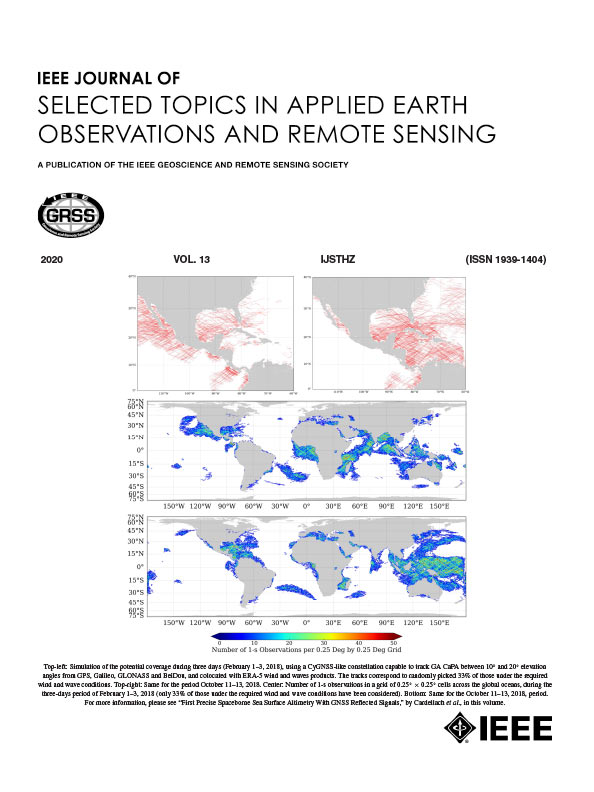Runoff Dynamics and Its Regime Changes in the Major River Basins of Africa From GRACE and GRACE-FO Observations
IF 5.3
2区 地球科学
Q1 ENGINEERING, ELECTRICAL & ELECTRONIC
IEEE Journal of Selected Topics in Applied Earth Observations and Remote Sensing
Pub Date : 2025-08-22
DOI:10.1109/JSTARS.2025.3601672
引用次数: 0
Abstract
The major African basins supply freshwater to around 0.5 billion people, while monitoring runoff fluctuations in these basins is still challenging due to limited in-situ data and high costs. Hydrologic models are widely used for this purpose, but they have certain drawbacks with larger uncertainty and low accuracy in poorly gauged basins. This study attempts to address this issue by using Gravity Recovery and Climate Experiment (GRACE)/GRACE Follow-On (GRACE-FO) satellite measurements and remote sensing data to estimate runoff changes in five major African basins from 2003 to 2019. Moreover, a comprehensive framework was developed to quantify interannual and intraannual runoff regimes and their changes from the perspectives of magnitude, variability, and duration. Results showed that runoff changes estimated from GRACE/GRACE-FO in the major African basins were in good alignment with those from the Global Land Data Assimilation System, European Centre for Medium-Range Weather Forecasts Reanalysis 5, and Soil Conservation Service-Curve Number. Seasonal runoff increased in the Nile (0.12 to 0.46 mm/a,基于GRACE和GRACE- fo观测的非洲主要河流流域径流动态及其状态变化
非洲主要流域为大约5亿人提供淡水,但由于现场数据有限和成本高昂,监测这些流域的径流波动仍然具有挑战性。水文模型被广泛用于这一目的,但在测量不充分的流域中,它们存在较大的不确定性和较低的精度。本研究试图通过使用重力恢复与气候实验(GRACE)/GRACE后续(GRACE- fo)卫星测量和遥感数据来估计2003年至2019年非洲五大流域的径流变化来解决这一问题。此外,还建立了一个综合框架,从规模、变率和持续时间的角度量化年际和年内径流状况及其变化。结果表明,GRACE/GRACE- fo估算的非洲主要流域径流变化与全球土地资料同化系统、欧洲中期天气预报再分析中心5和土壤保持服务曲线数的估算结果一致。2003-2019年,尼罗河流域(0.12 ~ 0.46 mm/a, p < 0.05)和刚果流域(0.52 ~ 0.76 mm/a, p < 0.05)的季节径流量增加,赞比西河流域(-1 ~ -0.34 mm/a, p < 0.05)和橙河流域(-0.54 ~ -0.24 mm/a, p < 0.05)同期径流量减少。进一步分析表明,气候变化是影响研究区径流变化的主要因素。尼罗河、刚果和尼日尔流域的月径流在规模、持续时间和变异性上都有所增加。相比之下,赞比西河和奥兰治河流域的径流量减少,变异性和持续时间也减少。此外,通过相关分析和小波分析发现,厄尔尼诺南方涛动指数和印度洋偶极子等大尺度大气环流与研究区内径流变化有关。我们的研究结果为非洲主要流域的长期径流变化提供了有价值的见解,并增强了对缺乏测量的地区水文过程的理解。
本文章由计算机程序翻译,如有差异,请以英文原文为准。
求助全文
约1分钟内获得全文
求助全文
来源期刊
CiteScore
9.30
自引率
10.90%
发文量
563
审稿时长
4.7 months
期刊介绍:
The IEEE Journal of Selected Topics in Applied Earth Observations and Remote Sensing addresses the growing field of applications in Earth observations and remote sensing, and also provides a venue for the rapidly expanding special issues that are being sponsored by the IEEE Geosciences and Remote Sensing Society. The journal draws upon the experience of the highly successful “IEEE Transactions on Geoscience and Remote Sensing” and provide a complementary medium for the wide range of topics in applied earth observations. The ‘Applications’ areas encompasses the societal benefit areas of the Global Earth Observations Systems of Systems (GEOSS) program. Through deliberations over two years, ministers from 50 countries agreed to identify nine areas where Earth observation could positively impact the quality of life and health of their respective countries. Some of these are areas not traditionally addressed in the IEEE context. These include biodiversity, health and climate. Yet it is the skill sets of IEEE members, in areas such as observations, communications, computers, signal processing, standards and ocean engineering, that form the technical underpinnings of GEOSS. Thus, the Journal attracts a broad range of interests that serves both present members in new ways and expands the IEEE visibility into new areas.

 求助内容:
求助内容: 应助结果提醒方式:
应助结果提醒方式:


